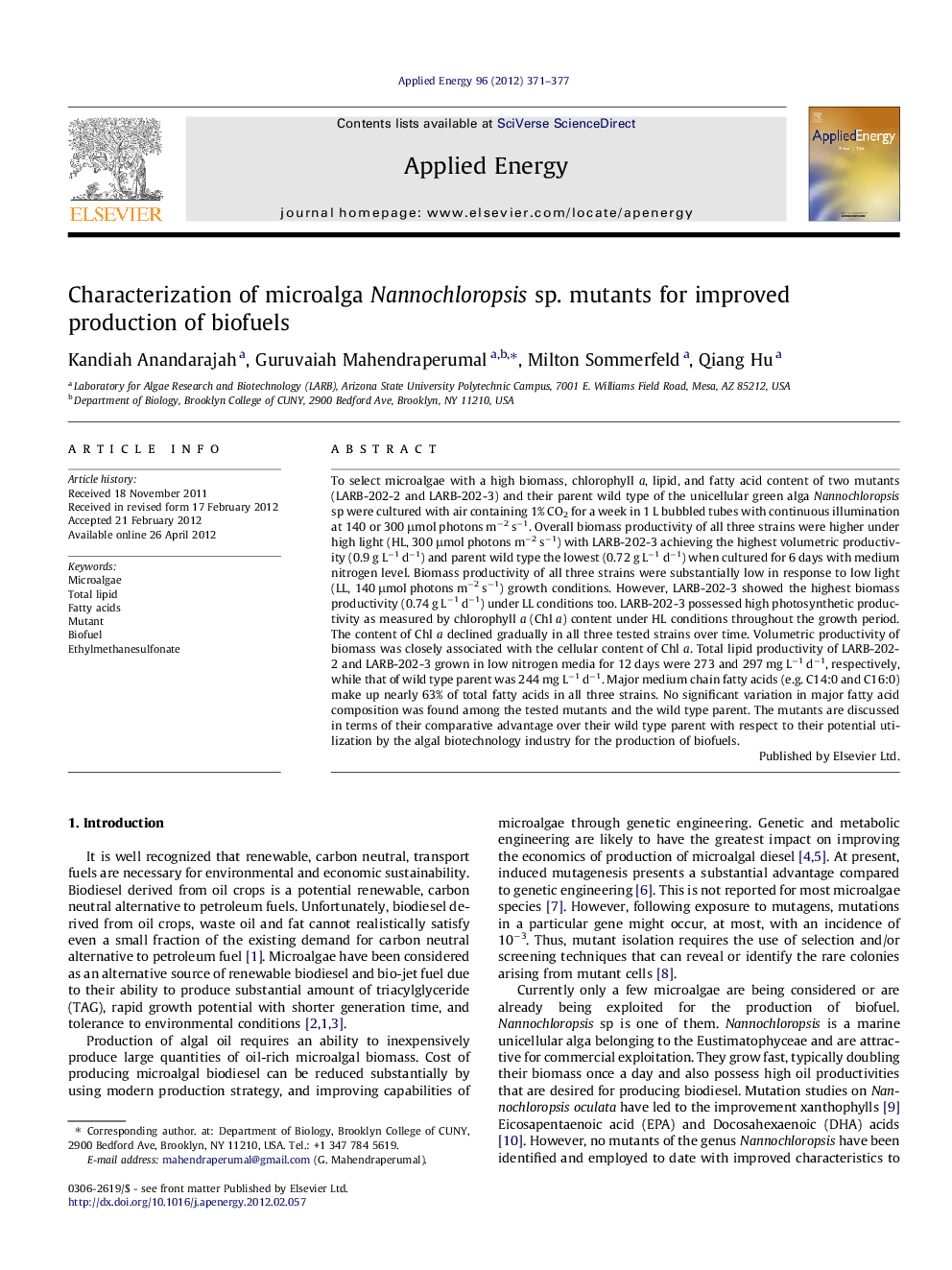| Article ID | Journal | Published Year | Pages | File Type |
|---|---|---|---|---|
| 243283 | Applied Energy | 2012 | 7 Pages |
To select microalgae with a high biomass, chlorophyll a, lipid, and fatty acid content of two mutants (LARB-202-2 and LARB-202-3) and their parent wild type of the unicellular green alga Nannochloropsis sp were cultured with air containing 1% CO2 for a week in 1 L bubbled tubes with continuous illumination at 140 or 300 μmol photons m−2 s−1. Overall biomass productivity of all three strains were higher under high light (HL, 300 μmol photons m−2 s−1) with LARB-202-3 achieving the highest volumetric productivity (0.9 g L−1 d−1) and parent wild type the lowest (0.72 g L−1 d−1) when cultured for 6 days with medium nitrogen level. Biomass productivity of all three strains were substantially low in response to low light (LL, 140 μmol photons m−2 s−1) growth conditions. However, LARB-202-3 showed the highest biomass productivity (0.74 g L−1 d−1) under LL conditions too. LARB-202-3 possessed high photosynthetic productivity as measured by chlorophyll a (Chl a) content under HL conditions throughout the growth period. The content of Chl a declined gradually in all three tested strains over time. Volumetric productivity of biomass was closely associated with the cellular content of Chl a. Total lipid productivity of LARB-202-2 and LARB-202-3 grown in low nitrogen media for 12 days were 273 and 297 mg L−1 d−1, respectively, while that of wild type parent was 244 mg L−1 d−1. Major medium chain fatty acids (e.g. C14:0 and C16:0) make up nearly 63% of total fatty acids in all three strains. No significant variation in major fatty acid composition was found among the tested mutants and the wild type parent. The mutants are discussed in terms of their comparative advantage over their wild type parent with respect to their potential utilization by the algal biotechnology industry for the production of biofuels.
► Growth/fatty acid content difference of Nannochloropsis sp and its’ wild type. ► Alga cultured with 1% CO2 in two light conditions 140 and 300 μmol photons m−2 s−1. ► Growth in biomass/chlorophyll/lipid content is higher in higher light conditions. ► Mutant LARB-202-3 had better growth and lipid content compared to other two mutants. ► The LARB-202-3 mutant is a candidate for feed stock for biofuels production.
